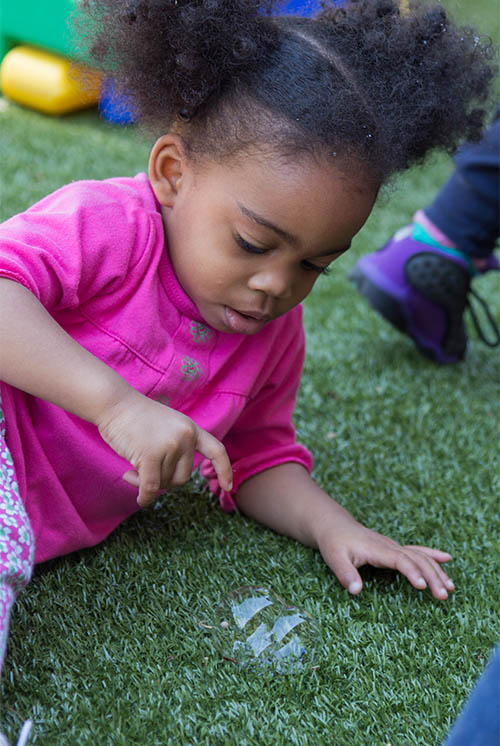Children can ...
Encounter the way that sunshine splinters into a hundred fragments of light as it streams through a willow hut ...
feel the soft touch of a summer breeze as it whispers through tallgrass prairie ...
smell the scent of fresh rain while splish splashing through a puddle ...
wonder at a strand of dew drops ...
hear the thwump, thwump, thwump of a low flying bird.(Used with permission from Beth Walling [Early Head Start National Resource Center, 2011])
 When in natural outdoor spaces, infants and toddlers learn about nature and begin to develop a connection with and appreciation for the natural world. With the support of caring adults, infants and toddlers experience and learn about weather and seasons, plants, bugs and insects, and wildlife that live and grow in their communities. They learn about life cycles and how plants and animals depend on each other for survival.1 They learn that nature is everywhere and everyone is a part of nature.2
When in natural outdoor spaces, infants and toddlers learn about nature and begin to develop a connection with and appreciation for the natural world. With the support of caring adults, infants and toddlers experience and learn about weather and seasons, plants, bugs and insects, and wildlife that live and grow in their communities. They learn about life cycles and how plants and animals depend on each other for survival.1 They learn that nature is everywhere and everyone is a part of nature.2
These early outdoor experiences are important because attitudes about nature are formed early. Infants' and toddlers' positive experiences with nature will likely play a part in how they come to value and care for the natural environment as they get older and throughout their lives.3 These experiences may also be important from a more basic human level. Biologist Edward O. Wilson's biophilia hypothesis suggests humans are born with an attraction to nature and the desire to connect begins in early childhood.4 Providing infants and toddlers with opportunities to explore and enjoy the outdoors acknowledges and honors this inborn attraction.
1Torquati et al., "Environmental Education," 8.
2Ibid., 10.
3White, "Young Children's Relationship with Nature."
4Shillady, Young Children and Nature, 2; Orr, The Biophilia Hypothesis.
Read more:
Resource Type: Article
National Centers: Early Childhood Development, Teaching and Learning
Last Updated: December 2, 2019
